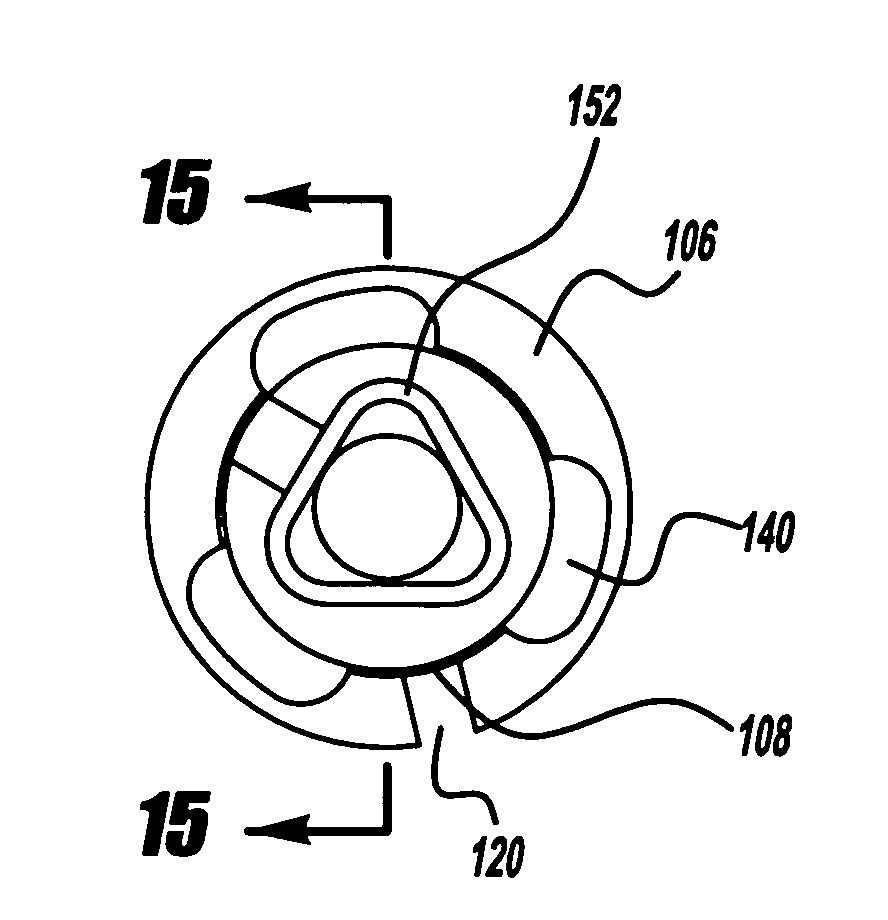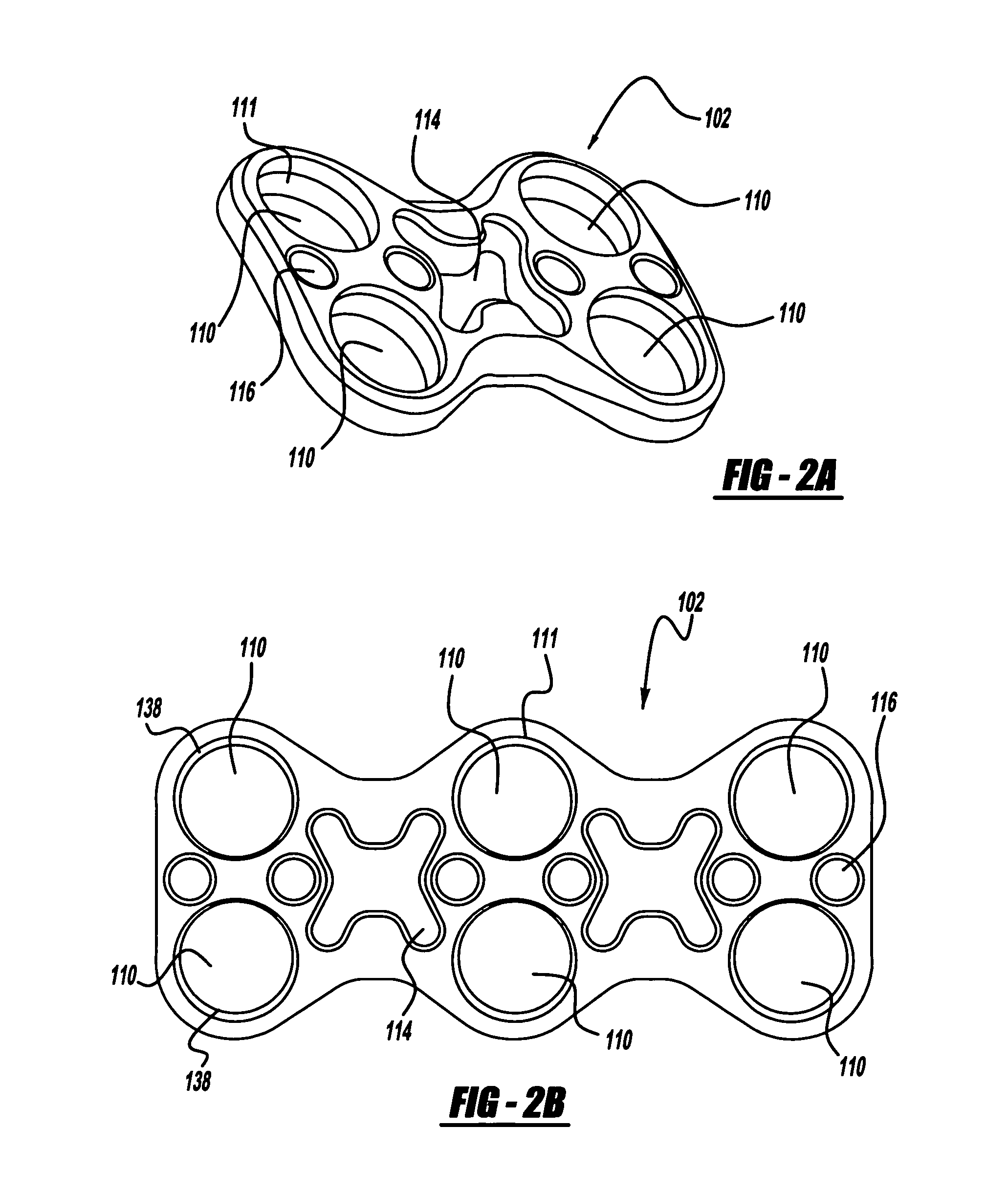Bone fixation device
a bone fixation device and bone technology, applied in the field of orthopedic surgical procedures, can solve the problems of large plate volume, adversely affecting intra-operative and postoperative viewing of the associate area of the spine, and conflicting requirements of spinal stability and system reliability over an extended period of us
- Summary
- Abstract
- Description
- Claims
- Application Information
AI Technical Summary
Benefits of technology
Problems solved by technology
Method used
Image
Examples
Embodiment Construction
The following description of various embodiments is merely exemplary in nature and is in no way intended to limit the invention, its application, or uses.
FIG. 1 illustrates an exploded view of a bone fixation apparatus 100 according to the present teachings. The bone fixation apparatus 100 generally includes a bone fixation plate 102 and a modular bone fixation fastener 104. The bone fixation fastener 104 includes an expandable head member 106 and a shaft member 108 having a shaft axis “C”. The bone fixation plate 102 includes one or more fixation holes 110 through which the bone fixation fastener 104 is inserted to be affixed to a bone portion.
FIGS. 2a to 2d illustrate examples of fixation plates 102 adapted for fixing together two to five bone portions 90, respectively, such as, for example, the vertebral bodies shown in FIG. 16. In the exemplary fixation plates 102 of FIGS. 2a-2d, the fixation holes 110 are arranged in pairs, two for each bone portion 90. Other arrangements are a...
PUM
 Login to View More
Login to View More Abstract
Description
Claims
Application Information
 Login to View More
Login to View More - R&D
- Intellectual Property
- Life Sciences
- Materials
- Tech Scout
- Unparalleled Data Quality
- Higher Quality Content
- 60% Fewer Hallucinations
Browse by: Latest US Patents, China's latest patents, Technical Efficacy Thesaurus, Application Domain, Technology Topic, Popular Technical Reports.
© 2025 PatSnap. All rights reserved.Legal|Privacy policy|Modern Slavery Act Transparency Statement|Sitemap|About US| Contact US: help@patsnap.com



